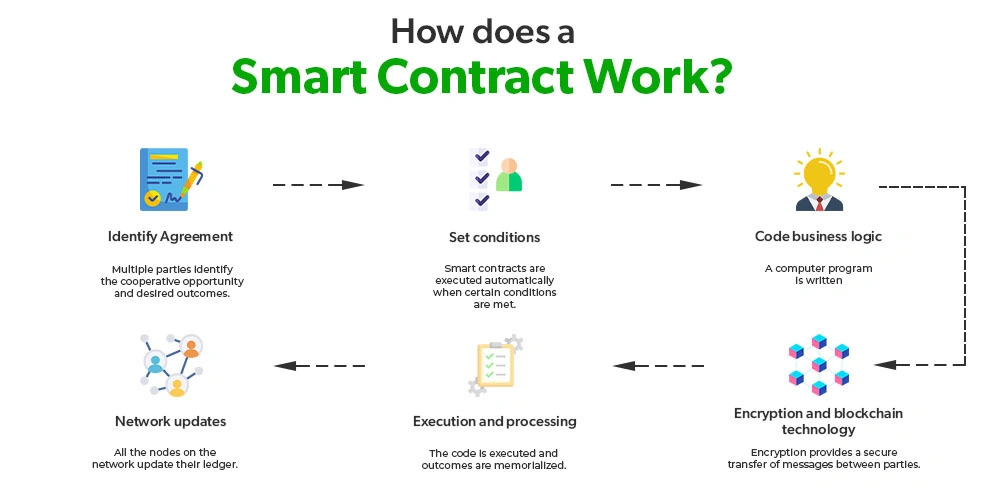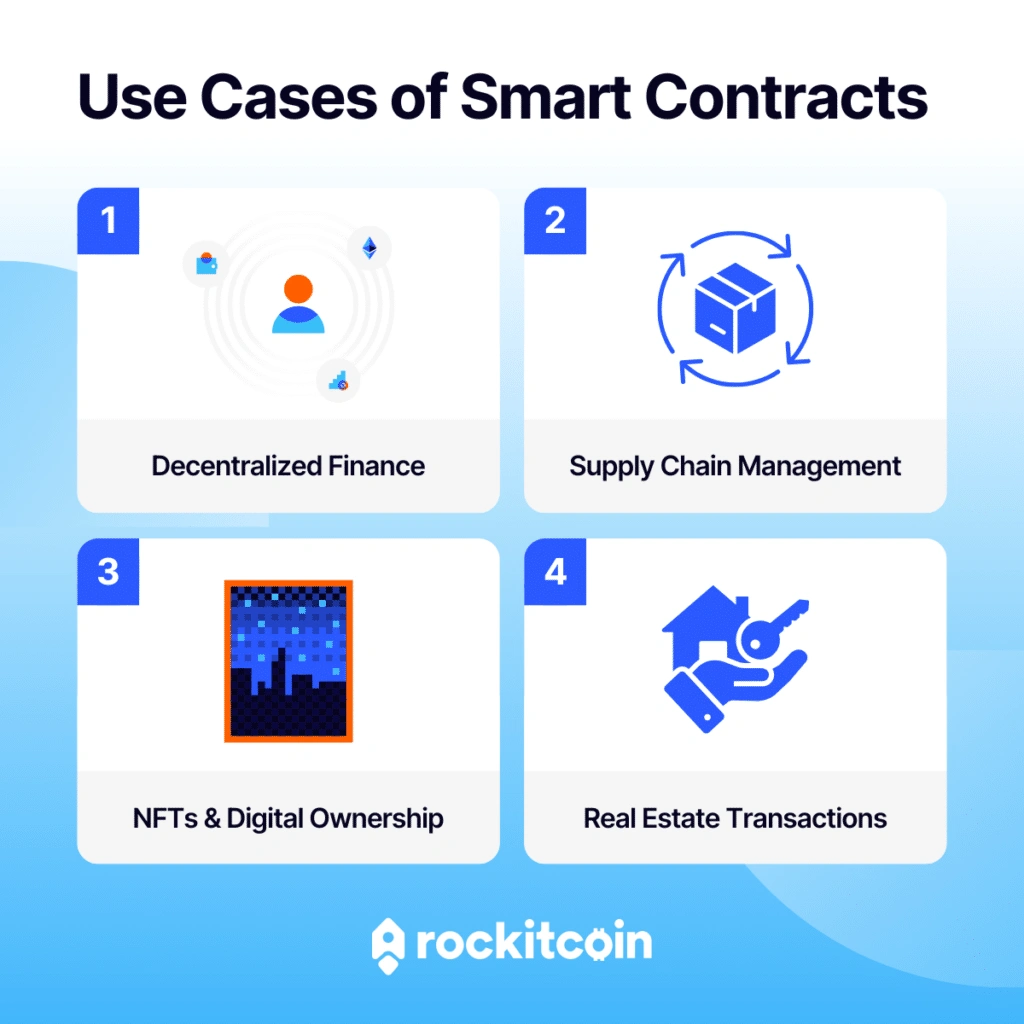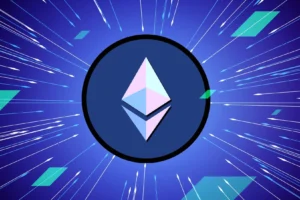Smart Contracts Made Simple: What They Are and Why They Matter
Introduction: The Logic of Trustless Code
Smart contracts for beginners may sound like a highly technical subject, but at their core, they’re quite simple: digital agreements that execute themselves. They live on blockchain networks, and they carry out instructions when preset conditions are met. No lawyers. No notaries. Just code.
In a world shifting toward automation and decentralization, smart contracts are becoming critical to how businesses and individuals operate online. They’re already changing how we think about finance, property, and identity. But before we explore how, we need to understand what they really are.
What Is a Smart Contract, Really?
Coined by computer scientist Nick Szabo in the 1990s, the idea of a smart contract predates blockchain itself. The concept is based on simple logic: “if this, then that.”
For example:
“If a payment is received, then release the digital asset.”
On the Ethereum blockchain, this kind of logic is written in Solidity, the most widely used smart contract programming language. Once uploaded to the blockchain, the contract becomes part of a public ledger. From that point forward, it runs exactly as written and cannot be altered.
A good way to understand it is through this analogy:
| Old World | Smart Contract World |
|---|---|
| Signed paper contract | Immutable lines of code on a blockchain |
| Witness or legal entity | Blockchain consensus verifying conditions |
| Manual follow-through | Automatic execution once conditions are met |
| Risk of human error | Logic-driven, self-contained systems |
How Smart Contracts Work

Credit from GeeksforGeeks
Smart contracts operate like vending machines. You insert your digital token (e.g., Ether), and the machine (contract) releases what was promised—be it another token, a service, or access to a system.
Here’s a simplified breakdown:
- Two parties define an agreement.
- A developer writes that logic into code.
- The contract is deployed to the blockchain.
- Everyone on the blockchain sees it and can verify it.
- Once the conditions are fulfilled, the contract self-executes.
Smart contracts depend on oracles (trusted external data feeds) when real-world data is needed. For instance, a contract may rely on a GPS-based oracle to verify delivery in a logistics transaction.
Why Smart Contracts Matter
Here’s where the potential really unfolds. Unlike traditional contracts that require intermediaries and extensive paperwork, smart contracts:
- Reduce costs
- Minimize delays
- Limit the scope for fraud
- Provide transparency
In blockchain-based finance (DeFi), smart contracts enable lending, borrowing, and trading without banks. In real estate, they can handle entire property transactions without escrow agents. In healthcare, they ensure patient data is shared securely and only with permission.
Smart Contracts for Beginners: Where They’re Used

Credit from RockItCoin
1. Finance & DeFi
Smart contracts are the backbone of decentralized finance. Platforms like Uniswap and Aave automate everything from swaps to savings accounts. Once a user locks their tokens into a protocol, the contract governs how funds are used or returned.
2. Supply Chains
Companies like IBM and Maersk use smart contracts to track shipping containers. Conditions such as temperature, location, and time of arrival can trigger actions—like confirming payment or logging a breach.
3. Real Estate
Tokenized real estate platforms use smart contracts to fractionalize property ownership. Investors receive digital tokens representing shares of a property, and contracts distribute rent automatically.
4. Gaming & NFTs
In blockchain-based games, smart contracts control item ownership, scarcity, and trade mechanics. NFT platforms rely on contracts to verify provenance and secure transactions.
Pros and Cons of Smart Contracts
| Pros | Cons |
|---|---|
| No middlemen, reducing operational costs | Once deployed, they’re immutable (can’t be changed) |
| Transparent and auditable | Bugs can lead to vulnerabilities or fund losses |
| Enforced by code, not courts | Rely on oracles for real-world data |
| Speed up complex transactions | Legal recognition varies by country |
Setting Up a Smart Contract (Simplified Walkthrough)
Let’s say two parties want to create a smart contract that releases funds once a delivery is made.
Step-by-step:
- Agree on conditions — e.g., payment is released once a GPS signal shows delivery is complete.
- Write the logic in code using Solidity.
- Test the contract using a tool like Hardhat or Remix.
- Deploy it to Ethereum or another blockchain.
- Monitor and execute — once the contract’s trigger is met, execution is automatic.
What You’ll Need to Learn (If You’re a Beginner Developer)
Smart contract development typically begins with Solidity, the most widely used language for writing blockchain contracts. For local testing and simulation, developers rely on frameworks like Hardhat or Truffle, which offer essential tools for compiling, deploying, and debugging contracts in a safe environment.
To connect these contracts to a user interface, libraries such as Web3.js or Ethers.js allow web applications to interact directly with the blockchain. During development, MetaMask acts as a browser wallet and helps simulate real transactions using test ETH on public testnets.
Once the contract is thoroughly tested, it can be deployed to live networks like Ethereum or Layer 2 solutions such as Arbitrum, depending on cost, scalability, and use case requirements.
The Role of Gas Fees
Deploying or interacting with smart contracts isn’t free. It requires gas fees, which pay network validators to process the transaction.
- Simple contract: $1–$10 in gas
- Complex DeFi protocol: Can exceed $100+
These fees fluctuate based on blockchain activity.
Security and Legal Concerns
Despite their strengths, smart contracts aren’t foolproof.
- Coding mistakes are permanent once deployed.
- Malicious actors may exploit poorly written logic.
- Legal systems are still catching up to blockchain technology.
For high-stakes contracts, third-party audits from companies like CertiK or OpenZeppelin are recommended.
Conclusion: Smart Contracts for Beginners in a World Moving Fast
Whether you’re a developer, investor, or just curious, understanding smart contracts is essential in 2025. They’re more than just tools—they’re foundational to how decentralized systems operate and interact.
As technology evolves, smart contracts for beginners will no longer be a niche interest. They’ll be part of daily life—from loans to logistics to digital identity. Now is the right time to start learning, exploring, and building.




